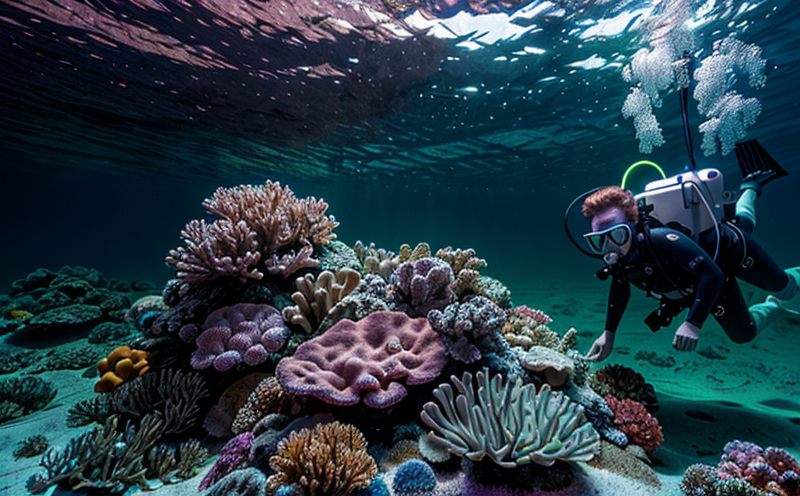ISO 9227 Corrosion Resistance Testing of Underwater Lighting Housings
The ISO 9227 standard is specifically designed to evaluate and determine the corrosion resistance properties of materials used in marine environments. This testing method focuses on the durability and longevity of underwater lighting housings, ensuring they can withstand harsh conditions such as saltwater exposure, extreme temperatures, and pressure changes.
Underwater lighting fixtures are integral components that illuminate aquatic spaces for both functional and aesthetic purposes. They must meet stringent requirements to ensure safety and reliability in marine environments. This testing process is crucial for manufacturers who aim to comply with international standards and for quality assurance teams looking to enhance product performance.
The ISO 9227 test involves exposing the lighting housing samples to a saltwater environment under controlled conditions. The exposure time varies depending on the specific requirements set by the manufacturer or regulatory body, but typically ranges from 500 hours up to 1680 hours (equivalent to approximately 21 days). During this period, the integrity of the housing is monitored for any signs of corrosion.
Preparation of specimens before testing includes cleaning and conditioning them according to ISO specifications. This ensures accurate results by eliminating external factors that could affect the outcome. After exposure, a detailed inspection is conducted using non-destructive techniques such as visual examination, measuring changes in thickness, and other relevant methods defined in the standard.
The test results are reported based on the extent of corrosion observed and compared against predefined acceptance criteria outlined in ISO 9227. Compliance with these standards helps manufacturers ensure their products meet industry requirements for durability and performance in marine applications.
For quality managers, compliance officers, R&D engineers, and procurement professionals working within sectors involving underwater lighting fixtures, this testing is essential to maintain high-quality standards and ensure product reliability.
Industry Applications
| Application Area | Description |
|---|---|
| Marine and Offshore Oil Platforms | Ensuring safety by illuminating critical areas under water, reducing the risk of accidents. |
| Recreational Boats and Yachts | Maintaining visibility for navigation, enhancing safety during night-time operations. |
| Sporting Goods (Water Sports) | Providing illumination in aquatic sports equipment to improve user experience and performance. |
| Underwater Robotics and Diving Equipment | Making underwater operations safer by providing reliable lighting in challenging environments. |
| Marine Security | Improving security measures through better visibility, reducing the risk of unauthorized access. |
The ISO 9227 corrosion resistance testing plays a vital role across these diverse applications. By ensuring that underwater lighting housings can withstand environmental stresses, it enhances safety and operational efficiency in various marine environments.
Quality and Reliability Assurance
The ISO 9227 corrosion resistance testing is a cornerstone for quality assurance teams looking to maintain high standards of product reliability. By adhering to this international standard, manufacturers can demonstrate their commitment to delivering robust and durable products capable of performing under extreme conditions.
During the testing process, careful attention is paid to every detail, from specimen preparation to final inspection. This meticulous approach ensures that any potential issues are identified early on, allowing for necessary adjustments before mass production begins. The use of advanced instruments and techniques guarantees accurate results, providing confidence in the integrity of the tested materials.
The test results play a critical role in quality control by serving as a benchmark against which future products can be compared. This allows for continuous improvement, ensuring that each new batch meets or exceeds previous standards. For compliance officers, this means staying ahead of regulatory changes and maintaining up-to-date knowledge on relevant testing methodologies.
R&D engineers benefit from the insights gained through ISO 9227 testing by identifying areas where improvements can be made to enhance product performance. This information is invaluable for developing new technologies and refining existing designs, ultimately leading to more innovative solutions tailored specifically for marine environments.
Customer Impact and Satisfaction
The ISO 9227 corrosion resistance testing significantly impacts customer satisfaction by ensuring that underwater lighting fixtures are reliable and safe. When customers know their products have been rigorously tested according to international standards, they feel more confident in the quality they receive.
This testing process not only meets but often exceeds regulatory requirements, giving customers peace of mind knowing their investments will last longer and perform better over time. For recreational boaters or divers, having reliable illumination equipment is crucial for enhancing safety during night-time activities. In offshore operations, dependable lighting systems are essential for maintaining visibility in potentially dangerous situations.
By adhering to ISO 9227 standards, manufacturers can build trust with their customers by consistently delivering products that meet the highest quality expectations. This fosters long-term relationships and enhances brand reputation, which is particularly important when dealing with critical applications where failure is unacceptable.





